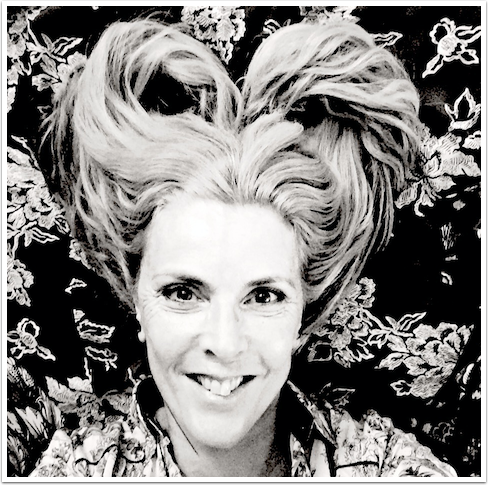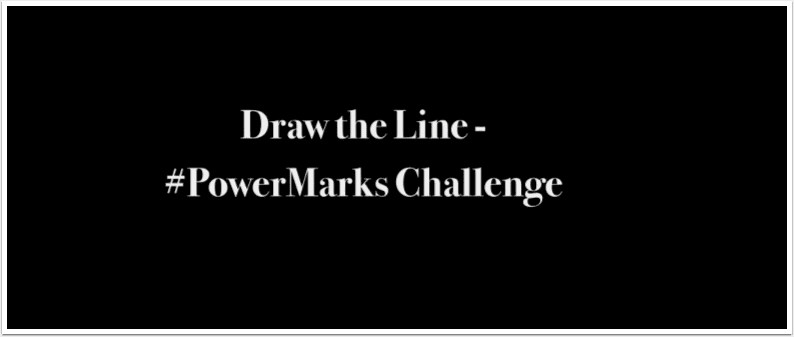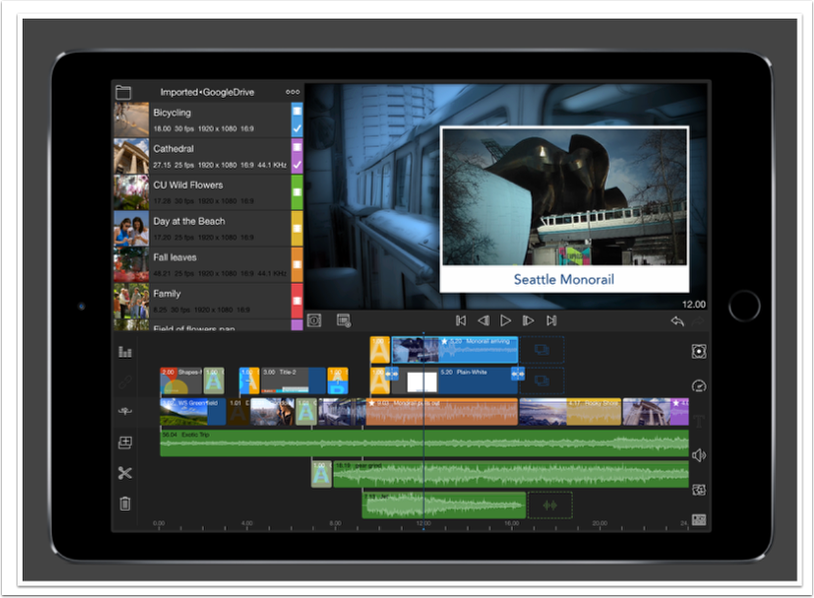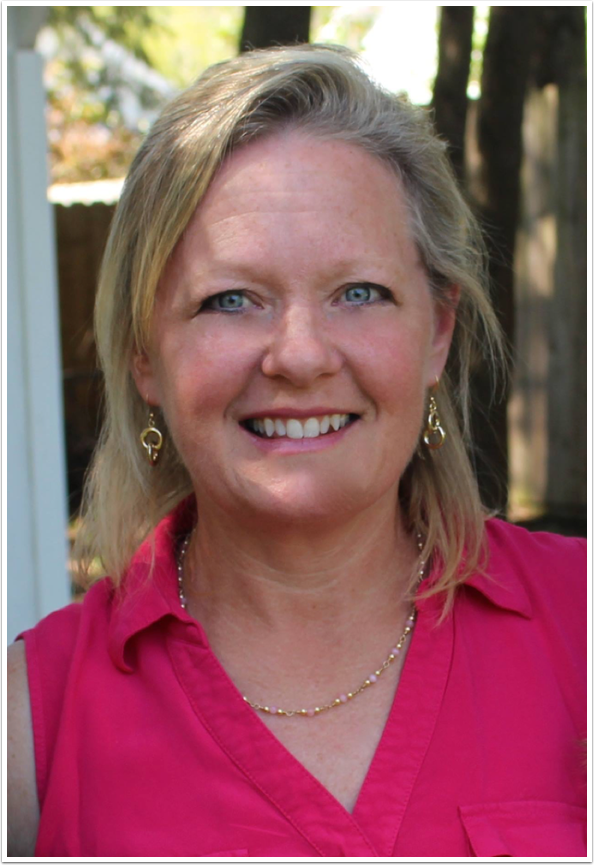Mobile Photography – Streets Ahead Interview – Paula Betlem – Mobile Street Photography
This is a really insightful and absorbing interview between our hugely talented co-editor of StreetsAhead, Cara Gallardo Weil and the inspirational, fresh and very exciting mobile street photographer, Paula Betlem. Thank you both for this, our readers are going to love it! (foreword by Joanne Carter).
“This week, the Women’s Mobile Street Photography Collective (StreetsAhead) is pleased and honoured to feature Paula Betlam in our interview segment.
I first noticed Paula’s work when she posted some photos on the Hipstamatic Street Photography page on Facebook. Although relatively new to street photography, she is a keen observer and has a good eye for composition. I highly recommend a visit to Paula’s gallery where you will see some of her other work as well as her street photography”.
Please tell us a little bit about yourself and what you do. Have you always been interested in photography?
I am a graphic textile designer, born in the Netherlands, but working and living in Belgium for many years. I have a passion for printmaking and photography, and love to travel. Photography was a part of my education at the Design Academy in Eindhoven, and for years I only had a small camera and used it just for holidays and work.
Being a bit of an introvert, I resisted the pressure of purchasing a cell phone for a long time (I hardly make calls, I do send text messages but only when I really have something to say). The idea of having a little camera that fit in the pocket of my jeans that could make that eventual emergency call persuaded me to buy one. Since then there is not one day that I do not take photos.
‘Things We Should Not Do’ ©Paula Betlem
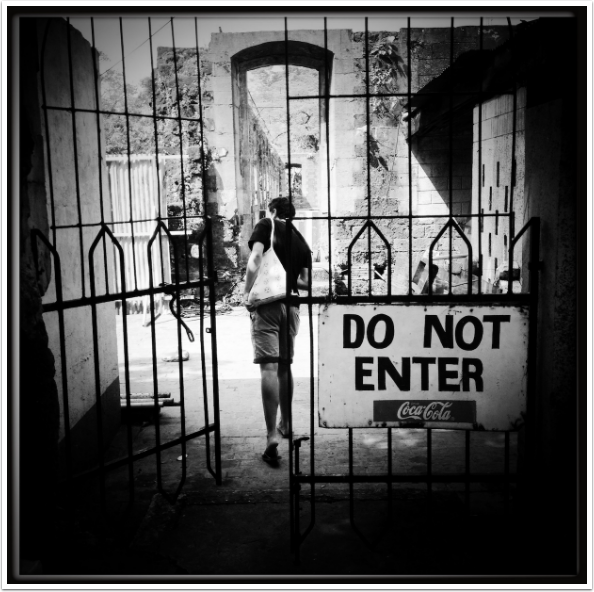
Where do you currently live? Is this a place that gives you energy and inspiration for your street photography or do you have to travel to find it?
I live in Brussels, the Belgian capital, a melting pot of different cultures and there is always something happening. It is a very chaotic city, with 19 boroughs, each with its own mayor, and is not always easy to understand. All of these boroughs have their own character and to live here you don’t need to understand the Belgian humor but it helps.
When I open my front door I am right in the middle of it. Although I don’t need to travel for inspiration, I believe that travelling is important to see things differently. We have a saying here, roughly translated as “we travel to learn and when we return we have become wiser”. I truly believe this.
By visiting other places you realize how tiny you are. You become aware that your certainties in life are fragile and can mean nothing in another place. It makes you full of wonder and curious again.
‘Dhaka’ ©Paula Betlem
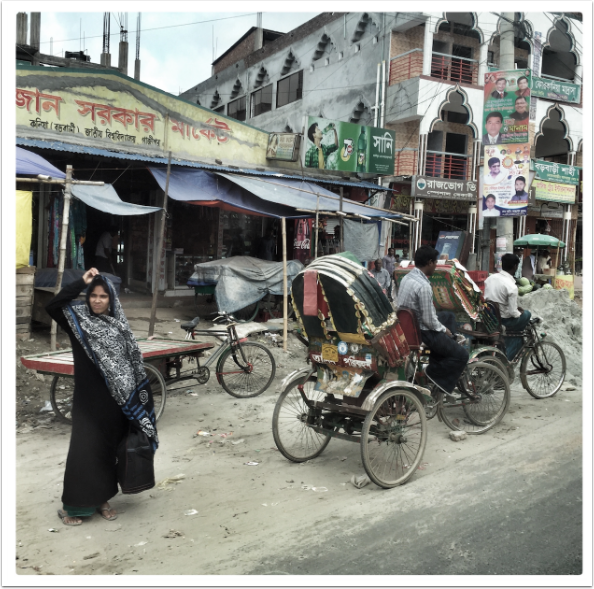
Does your location, be it a big city, a small town, or the countryside, heavily inform all your photographs in general, not just your street photographs? How do you choose the places that you go to photograph?
I do not plan too much in advance, but the location always plays a role in my images. I am fascinated by structures and patterns in architecture and nature, and I can lose myself completely in focusing on colour.
‘Reflection’ – ©Paula Betlem
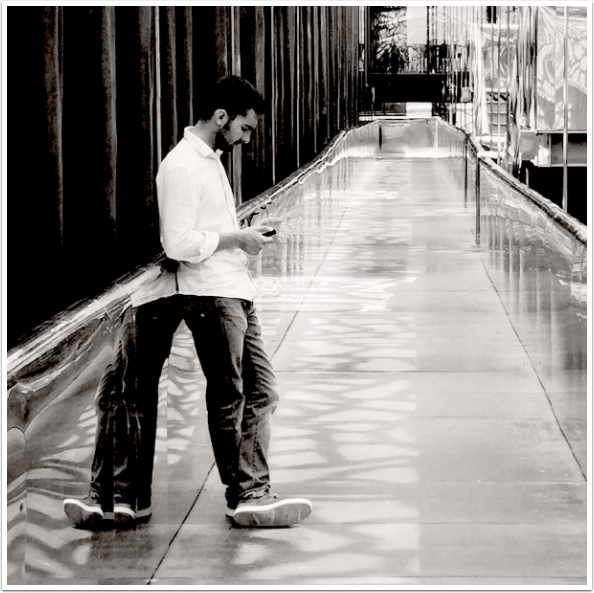
What first drew you to street photography and how did you discover it? What is it about street photography that compels you go out to shoot on the street? What are the subjects that are of the greatest interest to you?
I had been using the Hipstamatic app for some time and I joined a few Facebook groups one of them was Hipstamatic Street Photography. I was attracted by the images as they were telling a story, sometimes funny and witty, others showing a certain mood. There are many good photographers sharing their pictures and one of them, Arjan van der Horst, became a very dear friend. I admired his style of photography and accompanied him on several occasions. While he focused more on people, their expressions, their behaviour, in a very respectful way, I put people more in their context, their surroundings, more observing.
Although we felt very connected and could be in the same place, our pictures showed different worlds.
Sadly Arjan passed away early this year in February and he left an emptiness that is hard to accept. But that is life it happens to you when you least expect it and when you are so convinced you have enough time. This also taught me to look at things differently, because we all have our own story and when I go out I am always aware of that. I do not have favourite subjects it is more the place where I am, the colour or the light. I may not have a plan, but I always have my iPhone close and charged.
‘Harmony’ ©Paula Betlem
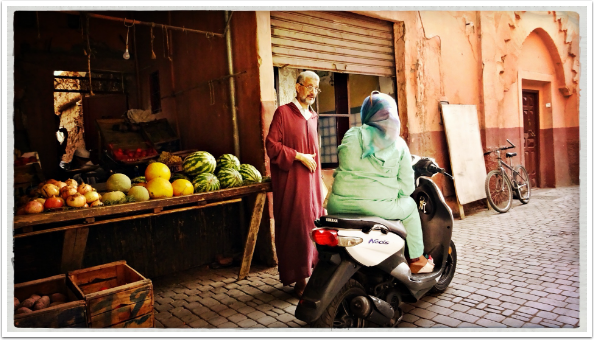
Do you sometimes secretly pose or direct the subjects in your shots or do you always shoot spontaneously? Do you think there is a “right” way to take a street photograph? There are those who feel that a photograph is only good if it follows certain guidelines and fundamentals such as “the decisive moment” or that street photography should never be posed. How do you feel about this?
I avoid reading too many guidelines, rules or fundamentals because I believe that only the picture itself can tell you if it is street photography or not. How you make it is for me not so important. Maybe because I think that art would not be what it is if artists always follow do’s and don’ts.
For now I do not pose or direct subjects, I always shoot spontaneously, first of all because I do not start with a plan. But it doesn’t mean I am against it. What I do when I have time, when the occasion is there, I try shooting from a different angle or go closer.
Arjan was very good at waiting for the decisive moment. He saw it as a challenge to shoot at that fraction of a second when people start noticing that they are being photographed, but are still acting completely natural. This made his pictures so fascinating. Posing or directing subjects will give another effect, but so does shooting with a 300mm zoom lens … All is fine it depends on what you want to say with your images.
‘Blend’ ©Paula Betlem
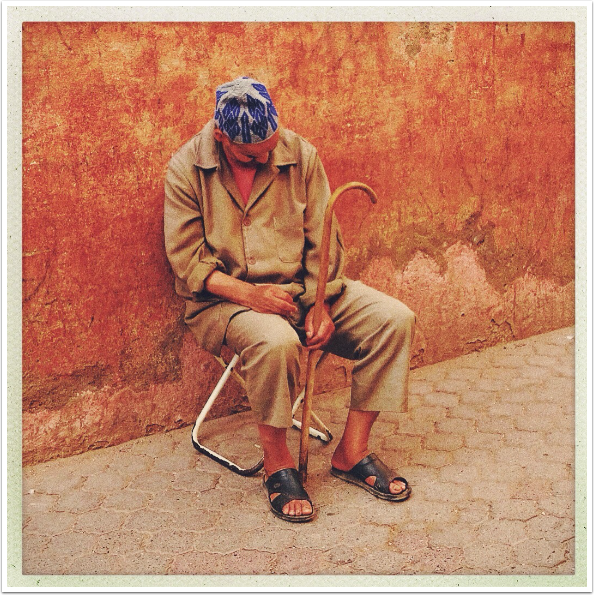
How do you feel about shooting from the hip as opposed to looking though the viewfinder?
I think I use both …
‘Manilla’ – ©Paula Betlem
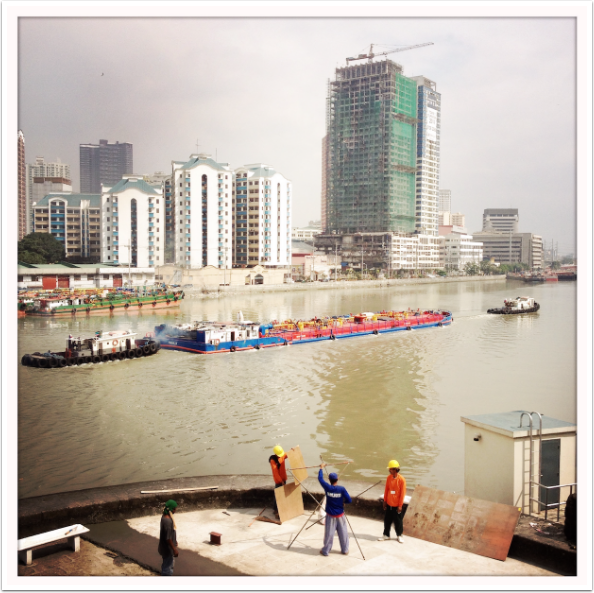
These days, the genre raises many questions with regards to the morals and ethics of taking photographs of strangers in a public environment. It is becoming increasingly difficult to shoot freely as a street photographer. What are your thoughts on this?
People nowadays do not have a lot of privacy in public places with cameras in streets for safety reasons and tourists carrying cameras, iPads, and smartphones, returning to their homes with lots of images, so the risk that you are somewhere in a photograph is quite high. This makes us think that people should not be too upset when you photograph them, but it is every person’s right not to want it. And of course they also start to be more and more aware that this picture can be published, and once this has been done it is difficult to remove it from the web.
When I am approached by somebody asking me to delete his or her picture I will do it, simply because it is their right and I am fine with that.
‘Marrakesh’ ©Paula Betlem
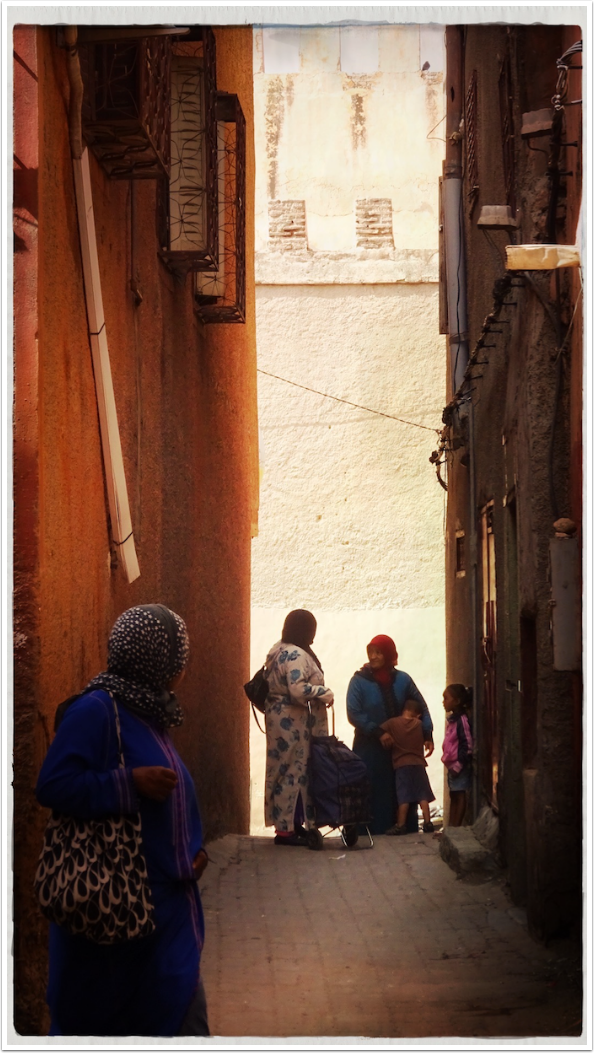
How do you feel about using model release forms and re-publication of images of the public? Are we morally, if not legally responsible?
When you sell your picture or publish it for commercial use, then I would definitely say yes.
You need it … I find it also quite normal that a company has to pay for it, that there is a certain time limit, and that a person should know and give permission for certain details is it national, is it worldwide, will it be a t-shirt for a local brand or newspaper advert, etc? It helps when you put yourself in the place of the subject … I would like to know if it as me. I also would like to have a certain time limit agreed. I know an example of a girl who’s picture was taken when she was 12 in an technical education center, she was paid €100 she was happy and it made her proud to see herself on the buses and in the physical books … but 10 years later she didn’t like it anymore and she felt a bit embarrassed but she is still in the books. It gives an uncomfortable feeling when you have no control anymore.
I work freelance for fashion retailers and not so long ago, it was a trend to have big photo-printed faces on t-shirts. I know a case of a girl who recognized herself. She put the picture of herself on Facebook or Instagram and it was used just like that. The girl was not only shocked to see herself, but also embarrassed because it was not a recent picture and she hadn’t been aware that it was still there on the web. Her parents, of course, were upset and the company had to take every t-shirt off the sales floor. Of course agencies do not want the trouble, so they lay all the responsibility with the photographer or in the last case, the designer who took the photo from internet.
When your intention is art, an exhibition, then I agree the lines are blurred. Your intention is not to make profit or use your images for a political, religious or other statement. It may an idea to ask your subjects, if you can.
‘Hands’ ©Paula Betlem
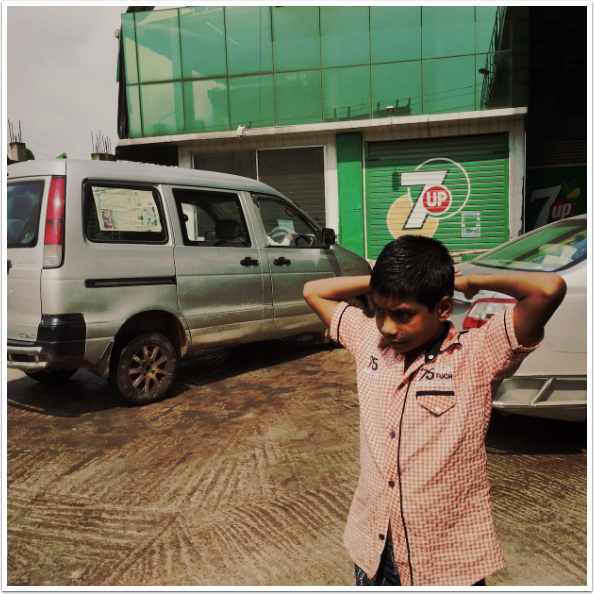
Do you have any personal rules when it comes to street photography? For instance, are there any situations that you feel are morally unacceptable?
When I feel that a person is not capable of telling me “I don’t want my picture taken”, because this person is sick, drunk, suffering extremely or in a really embarrassing situation, I will not do it.
Also with children, I am careful.
‘Things Men Do’ ©Paula Betlem
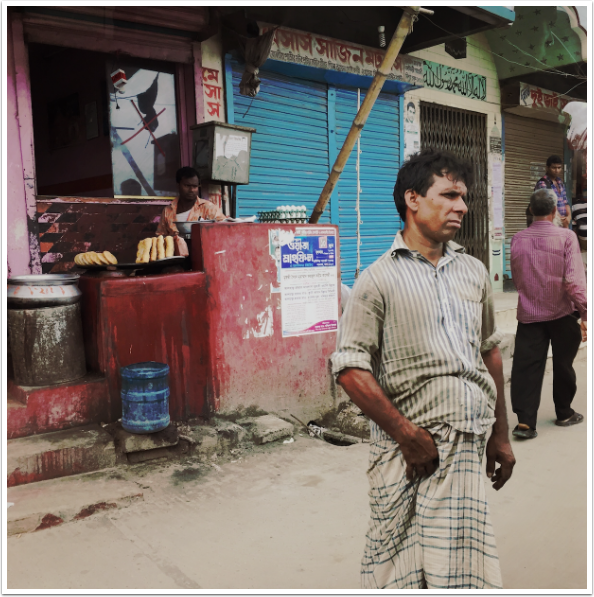
Do you think women street photographers share a different perspective to men? If so, can you elaborate on your thoughts?
We see things as we are, therefore I believe in differences in perspective, but I think this is more based on one’s personality rather than on gender.
Of course I speak as a woman in a part of the world where I can leave my house in all freedom, having the same rights as men here. I am very much aware that this is not the case for many other women worldwide, and that makes a huge difference.
‘The Kiss’ ©Paula Betlem
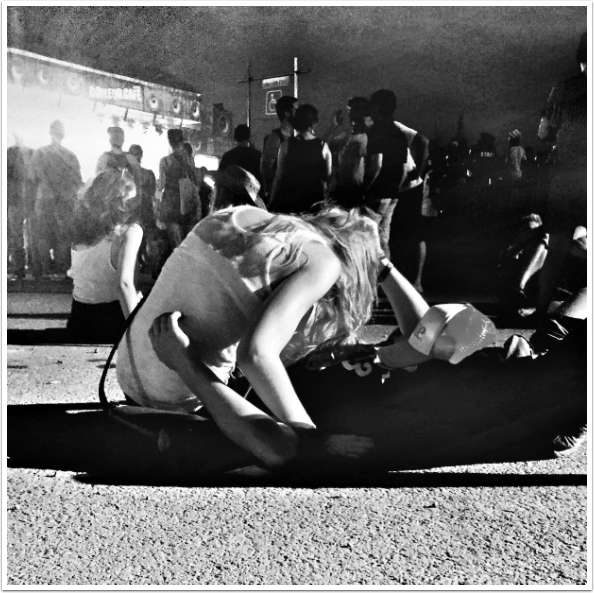
As a woman street photographer, do you find yourself drawn to shooting other women and children or do you prefer to shoot men or is this irrelevant? Would you feel uncomfortable if a male street photographer were to take a photograph of you?
For me this is not relevant, I see situations, colours, light, patterns, call it life.
On the second question I would say yes, I am afraid that I am that kind of person that is feeling very uncomfortable when someone is taking a picture of me, and probably especially when a man is doing it.
In general, I hardly pay attention if I am the subject or not. I also do not mind and would not ask to delete the photo. Only when it is too obvious, when the photographer comes too close or is too slow, so I have time to ask myself if my hair is ok and then realise (of course) that it isn’t then I would turn away or put my hand in front of my face.
Paulien Oltheten, a young Dutch street photographer is using this method in her work. Sometimes she contacts the people she photographs or films and asks them to repeat their action. It is interesting to see her work and it creates interesting images.
‘Us’ – ©Paula Betlem
“It was at a sandy open space in Marseille and the three of them were so relaxed and were so good together… I desaturated the colours and gave it a bit more exposure”
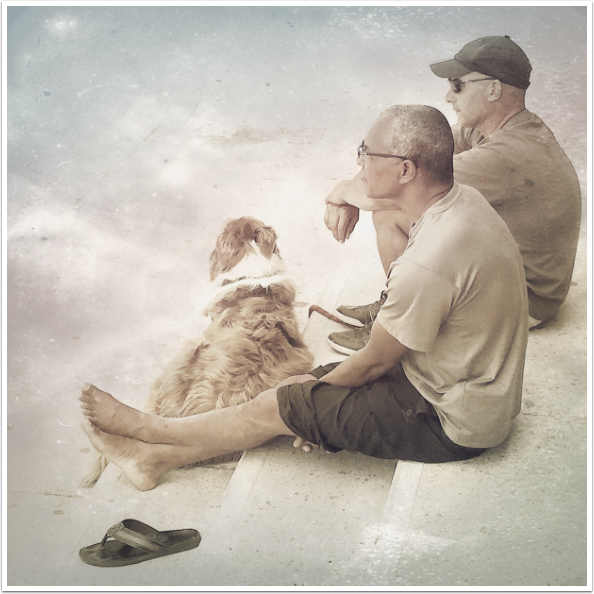
Do you think women street photographers are more accepted by the public when taking photographs or do you think they are more likely to be challenged? Do you have any experience of this?
My only experience to date is a woman demanding that I delete the last two photos because she was sure that she was on them. I was tired, was a bit upset with her unfriendly tone and as I did not even take a picture of her I refused to do it. She became very angry and started shouting that she knew her rights. Finally I showed her the last two photos that I took and she went away.
Would she have spoken in the same way if I were a man? I don’t think so.
‘Checked’ – ©Paula Betlem
“With this picture I immediately thought of two best friends and was already imagining that they had given each other a call in the morning to ask what they would wear today….I know probably not true ;)”
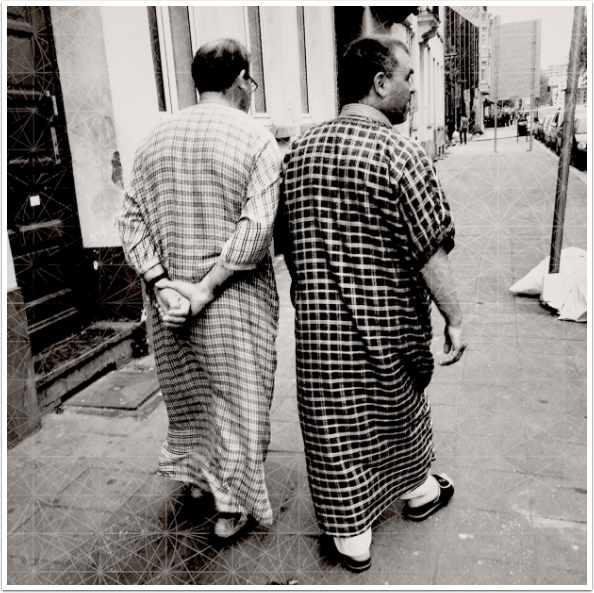
Which street photographers have influenced you?
Really influenced … it is hard to say who. For example Paulien Oltheten, I recently saw a documentary about her and her work and loved it. At some point you recognise a certain focus or interest and that is really nice. And there are many more but in the end you do your own thing. In order to develop your own style, it is good to see the work of other photographers, and also to be interested in other art, like street art, architecture, printmaking. And of course it influences your own work because you learn to observe better.
‘The Girl’ ©Paula Betlem
“I wanted to emphasise the different patterns in this image using black and white”
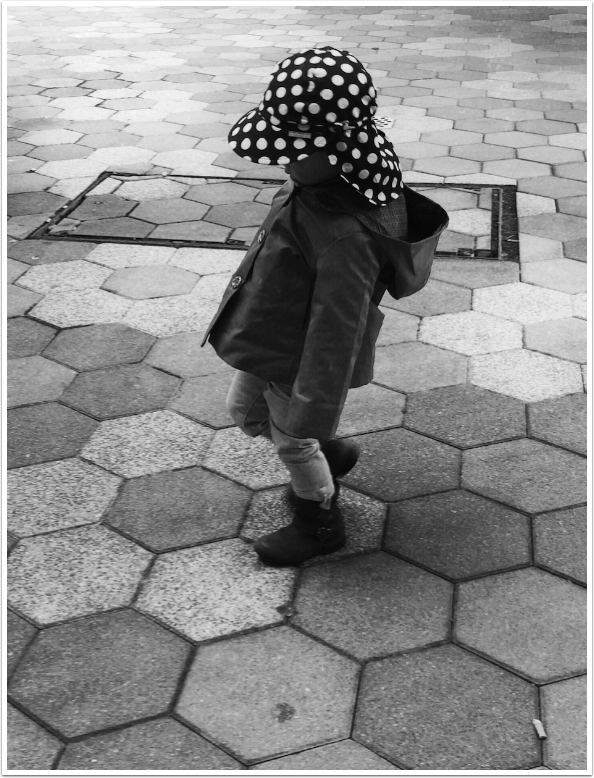
Which mobile device do you use to take your photographs? Do you post-process your photographs? If so, what are your favorite post-processing techniques/apps? If you post-process on your mobile device, do you usually transfer the images as soon as they have been processed to social sites (in other words, capturing and editing the image while in situ) or do you prefer to have more time to work on your images? Please share some examples of your workflow process.
I have an iPhone 6 and it is packed full with editing apps. After exploring them (and I am still planning to download some new ones that I have heard of) I mainly use Hipstamatic and Snapseed. The crop function gives me the opportunity to adjust the composition a bit, also tilt-shift is a very handy tool … I slightly edit the exposure, contrast and make use of the sharpening tool.
I mostly decide only afterwards if an image will be better in black and white. But that’s it. With the combinations that Hipstamatic offers, I sometimes enhance a certain colour and atmosphere, or I add a flash to do so …
I save everything to the camera roll and after one or more days I transfer a few to social media, I do not want all my pictures to be on Facebook.
Of course there is my printmaking passion (screen-printing, reliefprint (woodcut) and I use other apps for my art, combining structures, blending and distorting them. For these pictures I regularly use the iPad mini, because of the bigger screen.
‘The Burden’ ©Paula Betlem
“It is the line of the man’s back following the ceiling as if he carries the whole world on his shoulders”
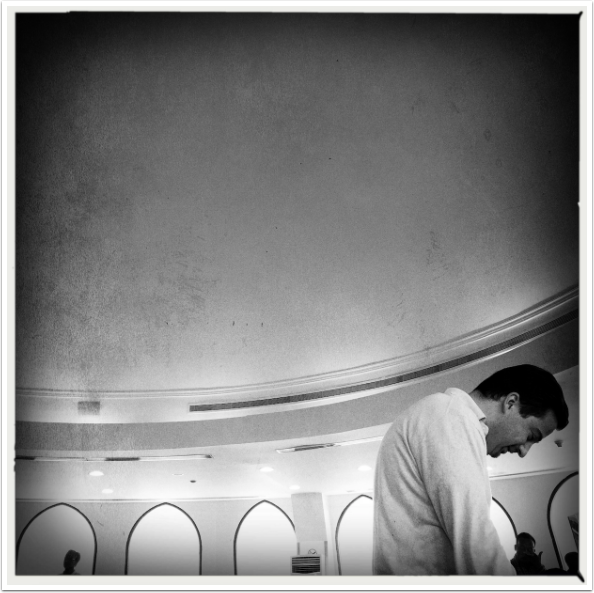
Do you pre-mediate the capture of your images? Do you have a plan or structure in place or do you prefer to act spontaneously? Please share your thoughts about some of your images what you were thinking, or felt when you shot those photographs.
For my street photography I work spontaneously, I go out and shoot … When I get home, I scroll through my pictures and very often I see a sort of pattern, as if the first picture sets the focus for the day. When I refer back to photos taken previously, I start seeing patterns in what I do. So over a long period of time, it can seem like I was planning in advance.
‘Runway’ – ©Paula Betlem
“This is for me a funny picture, because I was in Marseille doing the same tour as the boys and their parents. The hat is actually his mother’s and the boys were taking pictures of her during the tour. Here we just climbed a lot of stairs to end up on the ancient wall. As I passed them on the stairs I had time to be ready for them to come out of the door”
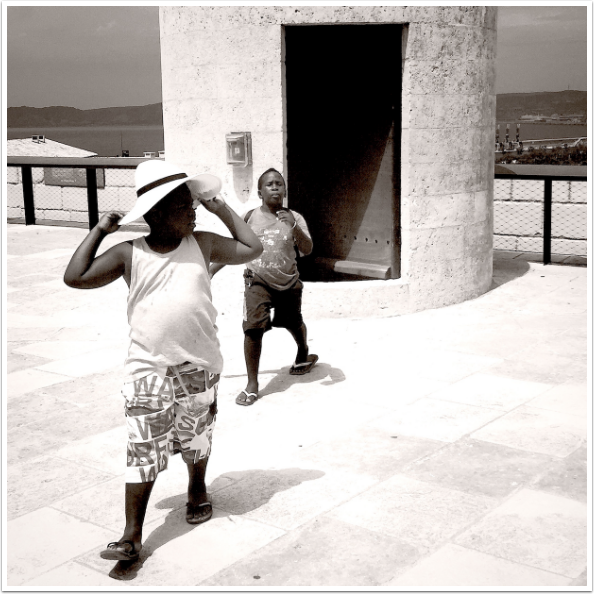
What is the importance of street photography within the entire body of your work? To what extent is street photography a major focus for you?
Street Photography is a big source of inspiration. My other passion printmaking, is really a slow art form, it takes ages compared to mobile photography before my image is ready to be printed and during the printing process so many things can be influenced that the result always has an unexpected side. There is also no “undo” button.
Mobile street photography is something that I can do without too much preparation with just a small device and it gives a faster result. It gives me energy and new ideas. The more I go out, the better I “see”. It is quite new for me but I really feel I need both equally.
‘Mystery’ ©Paula Betlem
“The real mystery of life is the visible’ … I had to think of this quote while waiting to order my lunch. It was like there was somebody behind the counter without a body, but of course I saw my own legs in the mirror”
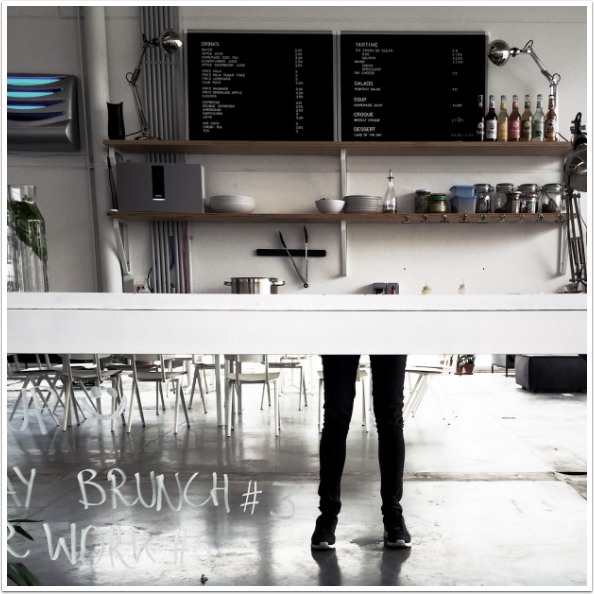
Who do you think is the audience for your work? Is this who you want your audience to be? What is it you hope to achieve, either on a personal or professional level, with your body of work?
I am not sure this is a very good question. As I show my photography only on Facebook and Flickr my audience is quite a small group … and mostly people with a common interest.
With my printmaking and photography I show my world, I show who I am. The mystery of how we all experience things differently. For the time being I have to combine it with my job as a freelance designer in retail fashion.
I hope that my audience will expand a bit and that people get inspired to get out and try to look around them with new eyes. But I mainly enjoy doing what I am doing, My slow art gives me peace of mind there is some repetitive physical work in it which allows me to time to think and be quiet on my own and the photography often shows me the fun in life.
‘The Dentist’ – ©Paula Betlem
“I took three pictures here but I chose this one because you don’t see the faces. You also do not see what is happening, but it is so clearly the dentist. I did not plan this in advance, but while waiting you suddenly see how this could be as an image and as I always carry my iPhone”
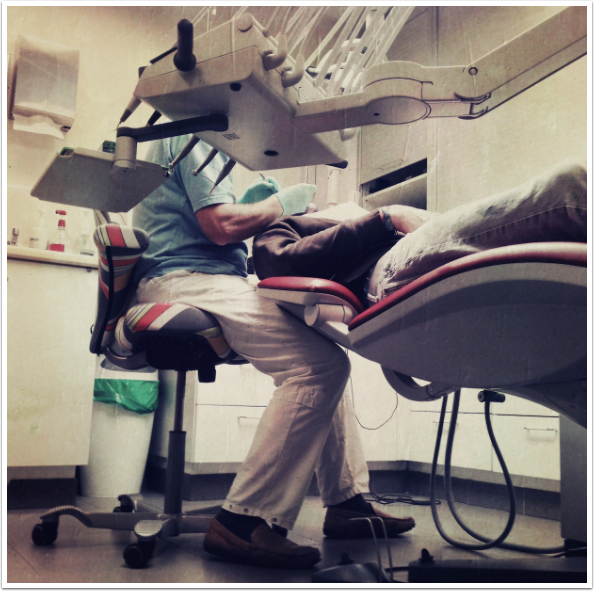
What do you think distinguishes your street photography from others in the group?
There are many talented photographers in the group and it is great to see that they really often have their own clear style.
I hope that my images show my love for colour, patterns and all the visible mysteries in life, and that they tell their little stories.
‘Orange’ ©Paula Betlem
“When I saw the man selling his vegetables and fruit, I noticed the orange van in the background. I waited until he was standing near the oranges before shooting and I enhanced the colour slightly afterwards”
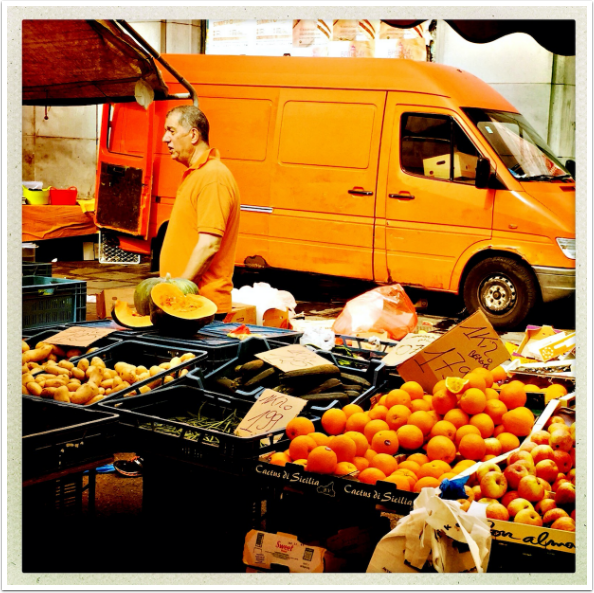
Where do you show your work? How has social media played a role in your photography? Which platforms are you most active on?
I show my work mainly on Facebook and more recently on Flickr. I found my way to Streets Ahead and Streetwise next to the Hipstamatic Street Photography, and find it all encouraging. I am using Instagram for printmaking and as an inspiration tool in general. It seems a bit strange but I naturally feel more comfortable on Facebook with photography (I also joined a few other Hipstamatic groups) maybe because it is more personal?
Social media is playing a role, as it is very encouraging when people react positively to your work. And seeing so many beautiful images that others make is also a source of inspiration.
‘Things we do’ – ©Paula Betlem
“This is something you see a lot in a museum, and you wait until you have the right person at the right time to shoot. He Isn’t looking at the piece of art, but is reading the information at the bottom left. I find it funny that you see this all the time, as if the information is so much more important than the art itself”
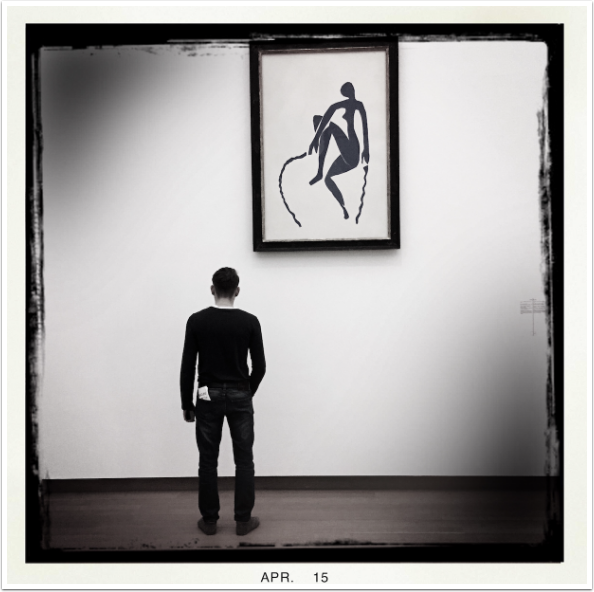
Do you have any tips that you would like to share with us? Is there anything else you would like to add?
Only a big thank you, I feel very much honoured doing this interview. I love the AppWhisperer, and since I became administrator for the Hipstamatic Street Photographer Group, I realise even more that you must be investing so much time in this collective. The information that you share and the input from so many talented people is really great!!
‘Red’ ©Paula Betlem
“Most people probably think that this lady is reason for me to shoot, but actually it isn’t. I saw her previously at the market but it was here that I suddenly noticed that her bag on wheels was the same colour and shape as meat sold in the background”
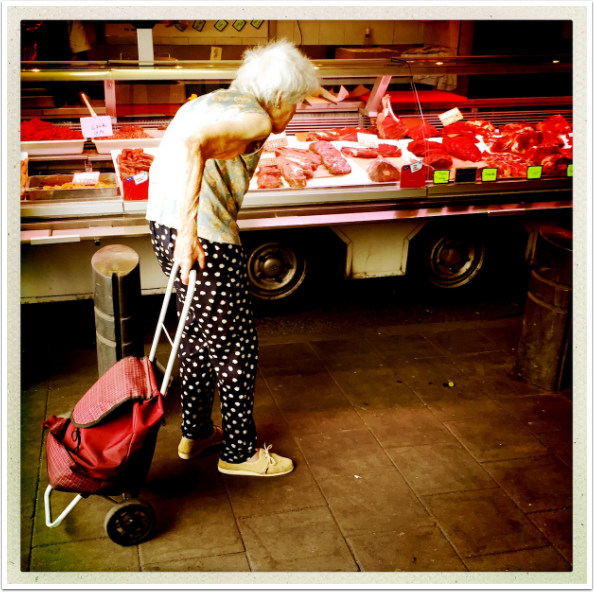
Donating = Loving = TheAppWhisperer.com
Bringing you (ad-free) TheAppWhisperer.com takes hundreds of hours each month and hundreds of pounds to sustain. If you find any joy and stimulation here, please consider becoming a Supporting Member with a recurring monthly donation of your choosing, or possibly making a one-time donation. This is a not for profit website and one that can only grow with your support.
[seamless-donations]
